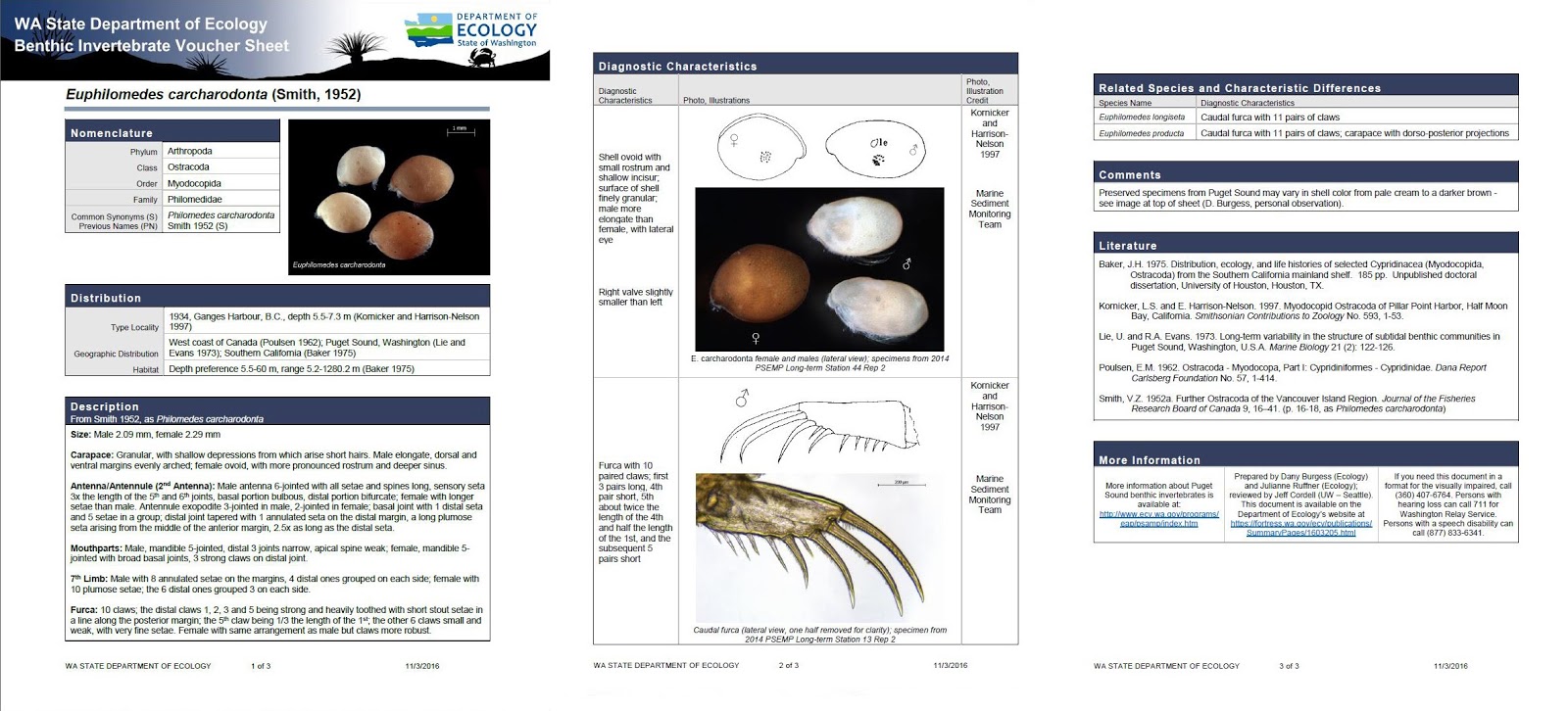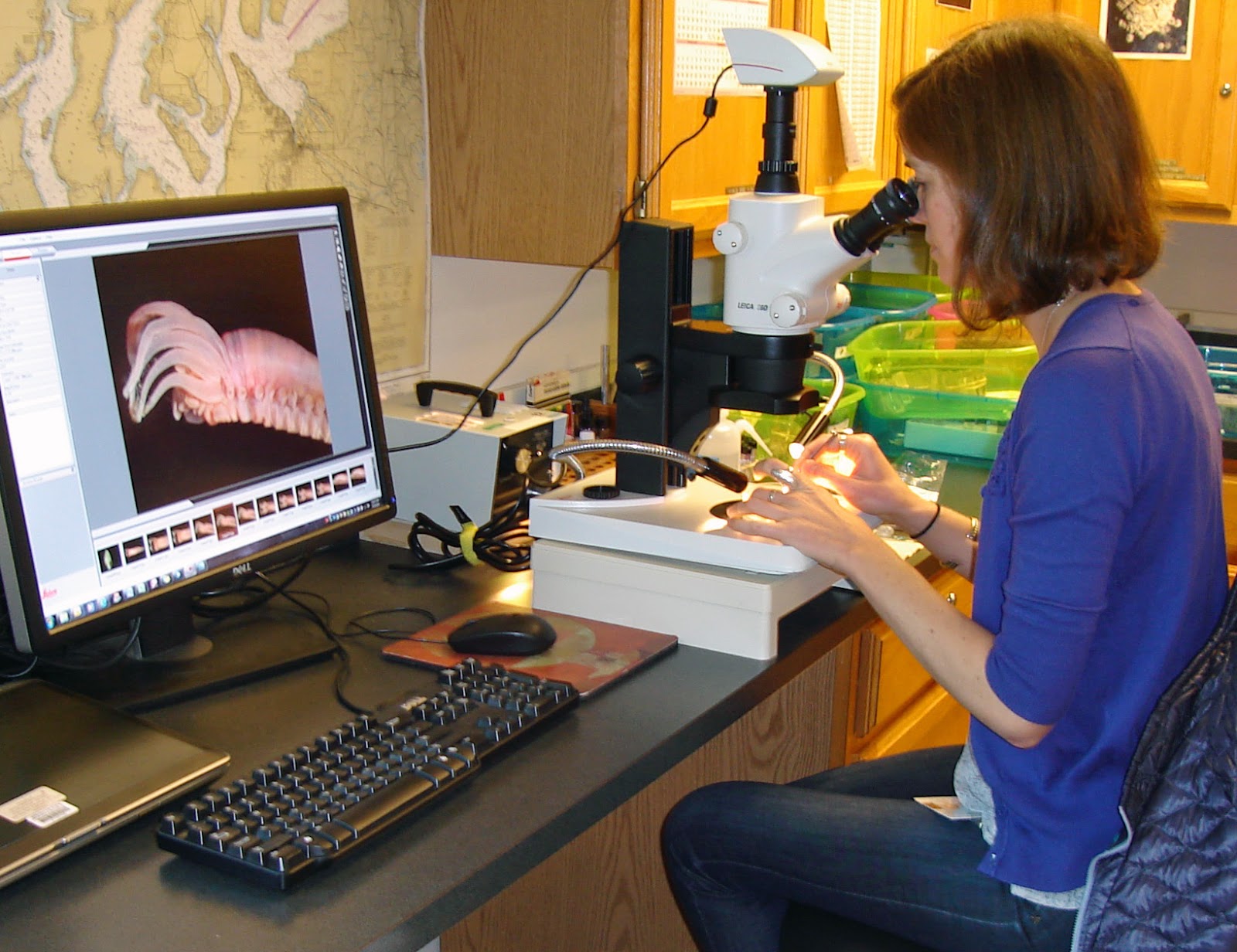This month, we’re taking a break from our regularly scheduled critter post to tell you about an exciting venture we’ve been working on here in the benthic lab: the voucher sheet project.
Name-dropping
The first page of a voucher sheet for Lucinoma annulata.
Sort it out
It all starts when we sit down at our microscopes and open up jars containing hundreds of tiny preserved animals from our monitoring work in Puget Sound. Each jar gets dumped into a dish, and the animals are “morphotyped” — sorted into piles of similar-looking species based on their physical characteristics. Some species are distinct, and we recognize them right away. Others require delving into books, journals, online references and any other bits of information we can find in order to unravel the mystery of their identities.
LEFT: A jar of marine worms gets emptied into a dish to await identification. MIDDLE: In the process of morphotyping. RIGHT: The completed sample, identified and labeled by species
Detective work
Searching for taxonomic literature takes a LOT of time, and many references don’t contain illustrations. We’ve set out to help solve this problem by creating a set of Ecology publications called Benthic Invertebrate Voucher Sheets. It’s a large undertaking — we’ve completed 50 and have many more in the works!
A completed voucher sheet for the ostracod Euphilomedes carcharodonta.
What's in a voucher sheet, exactly?
A close-up of the feet of the marine worm Cheilonereis cyclurus shows the tiny hairs and other features that make it distinct.
After we do our review of the literature, we create a voucher sheet that includes a basic classification, a general description and most importantly, a list of diagnostic characteristics which set that species apart from other similar-looking species. Using cameras attached to our microscopes, we take photographs of these diagnostic characteristics, even features as teeny as the hairs on a worm’s foot! These high-quality images illustrate exactly what to look for when we examine a specimen.
Benefits for Puget Sound and beyond
By generating accurate data on what species are present in our samples, we can detect changes in the benthos over time as they respond to environmental stressors like those associated with climate change and pollution.
Dany uses a microscope and attached camera to take a photo of a marine worm in the family Ampharetidae.
Voucher sheets not only help us correctly identify the critters we monitor, but they will also help other scientists doing similar work. Most species we collect aren’t limited to our region — many can be found all the way from Alaska to Mexico.
Scientists working in other regions can access our voucher sheets to help them correctly identify the invertebrates they collect. This is one way to improve taxonomic standardization — that is, making sure animals are identified the same way by taxonomists working in different areas — and expand the body of knowledge about our valuable biological resources.






